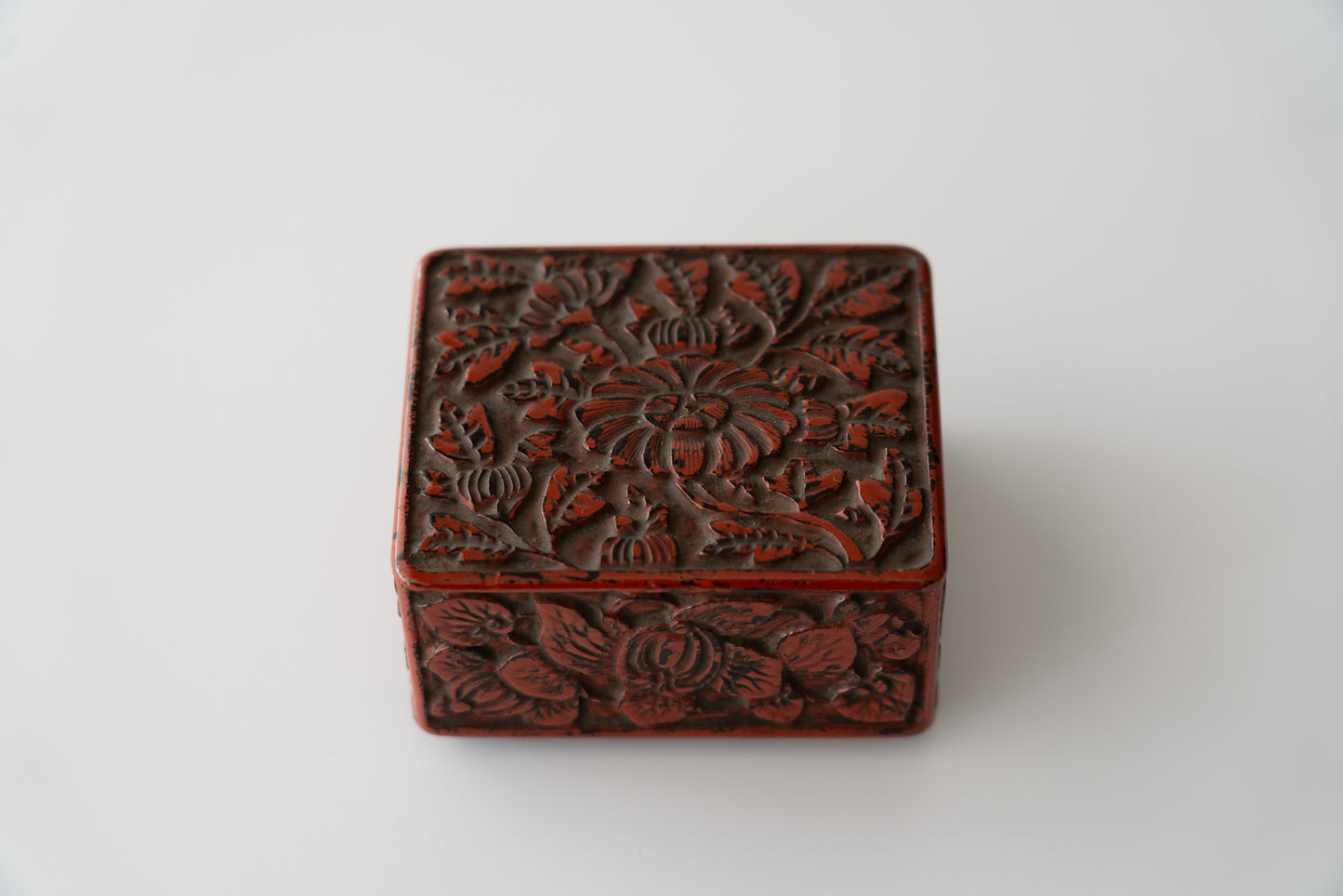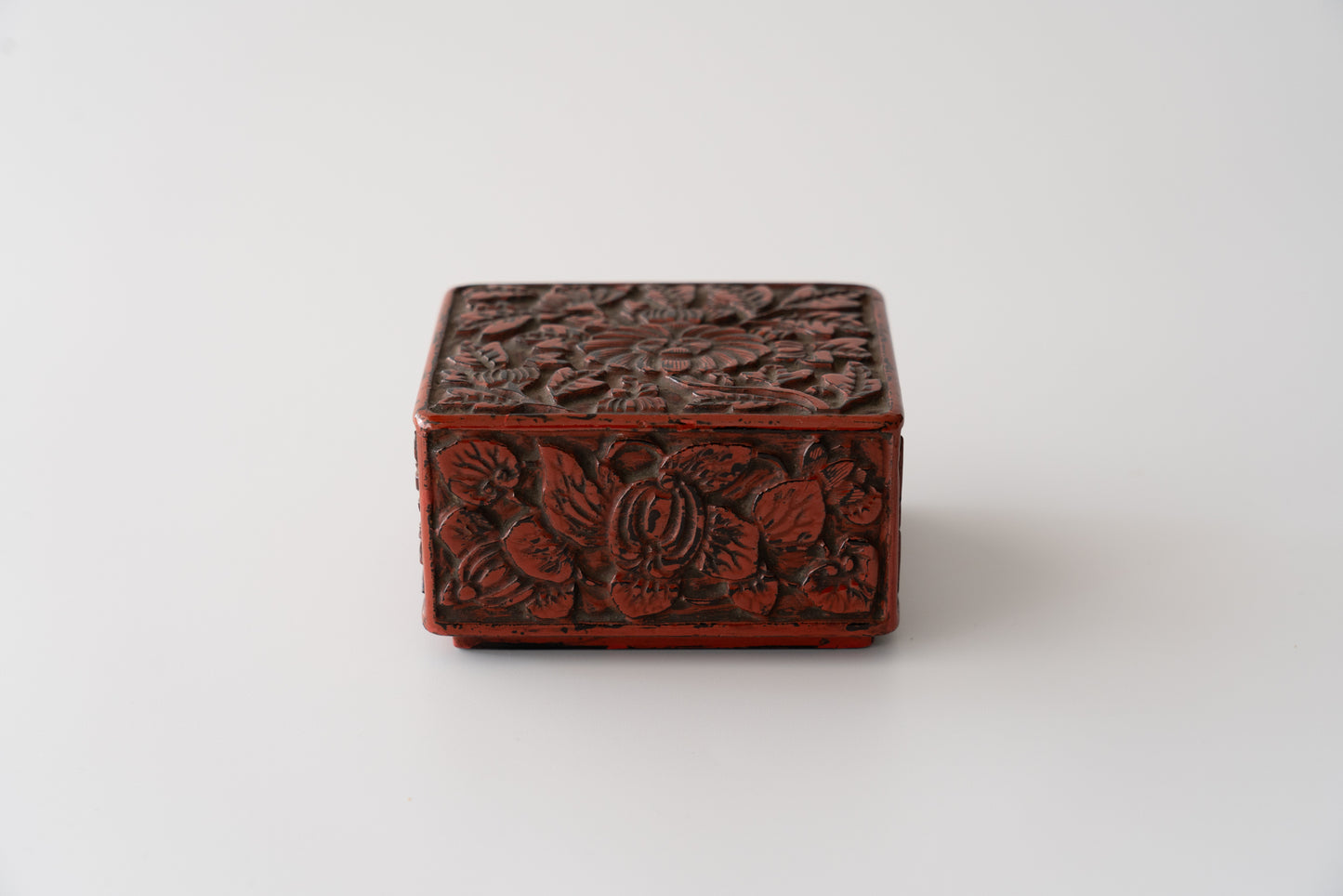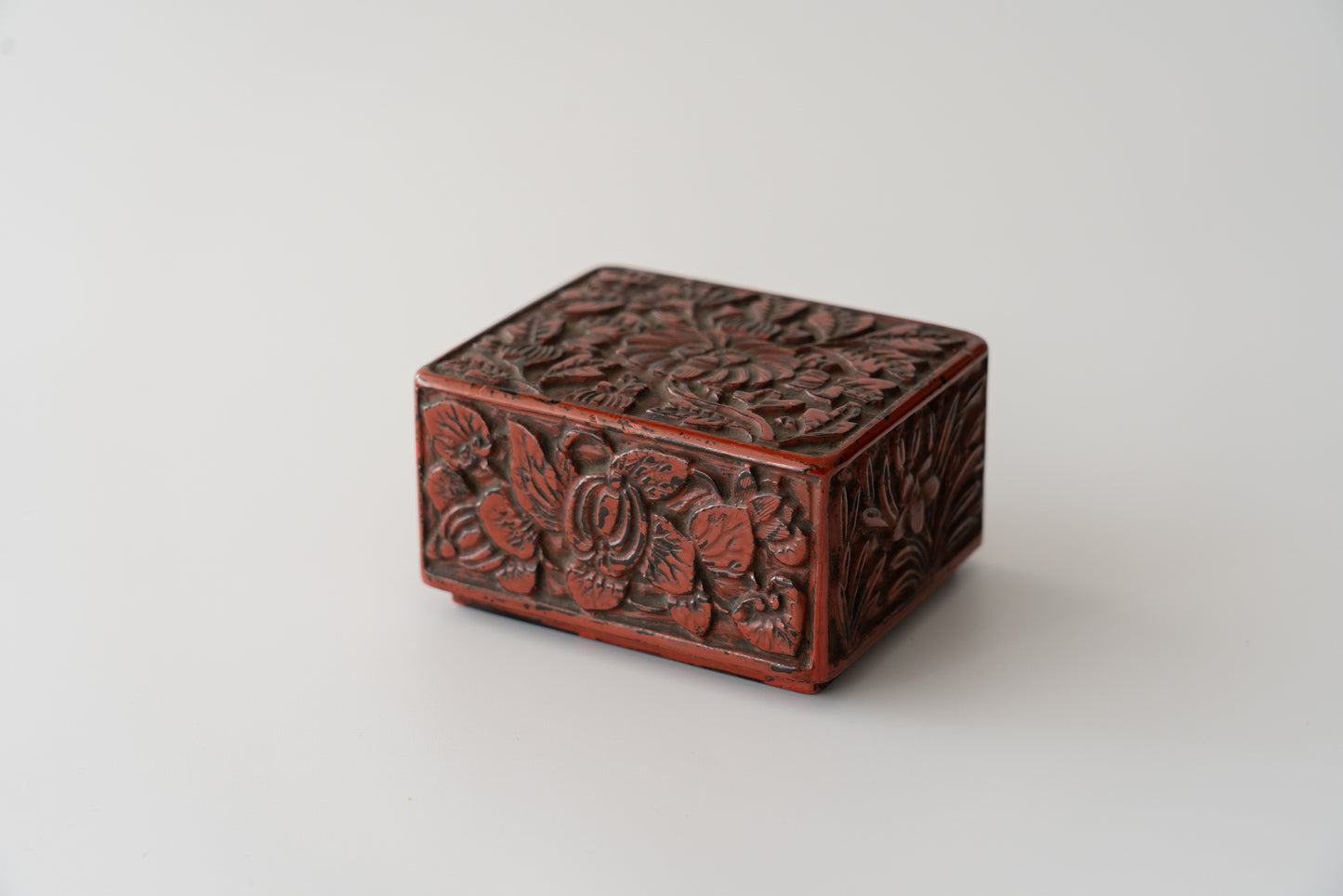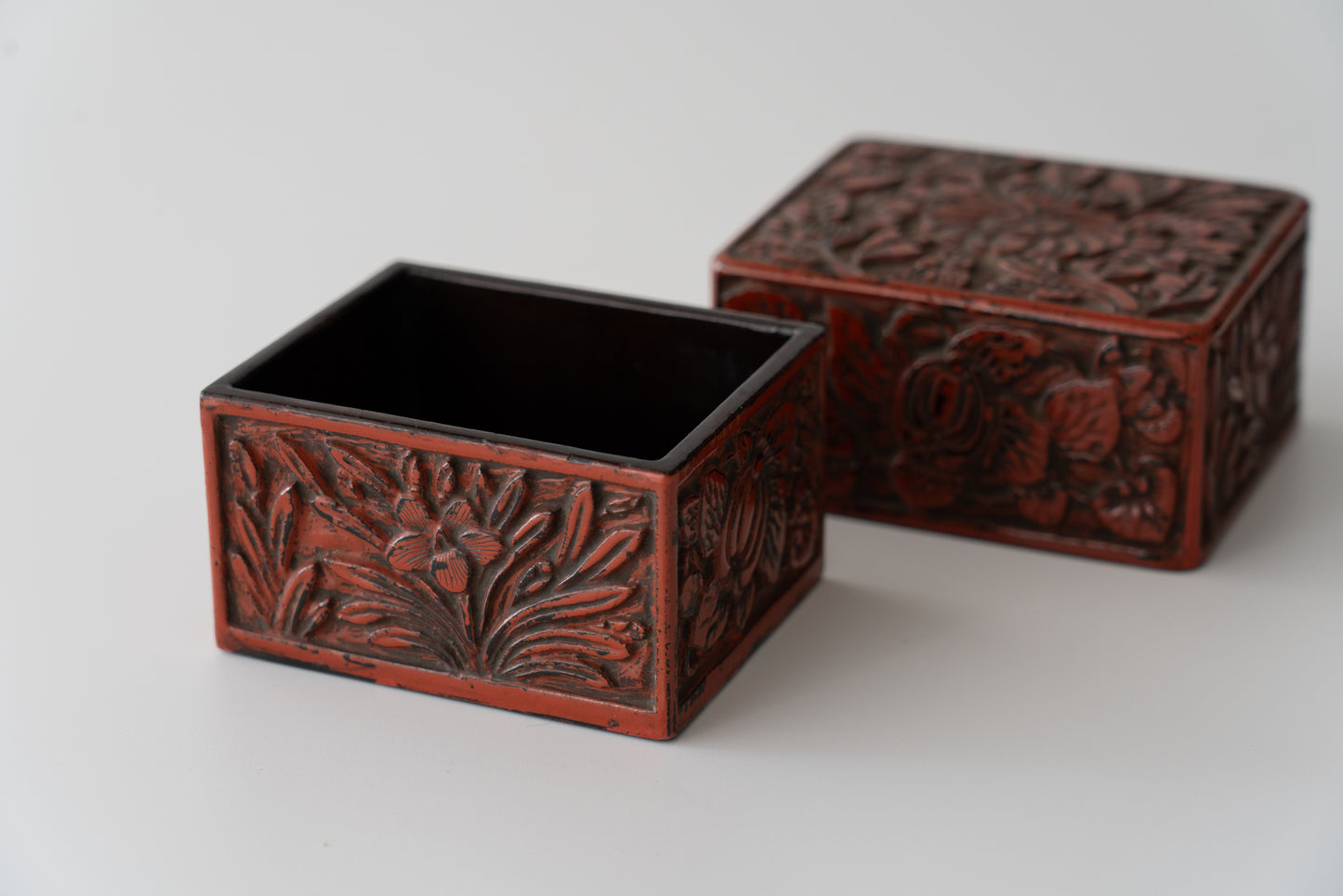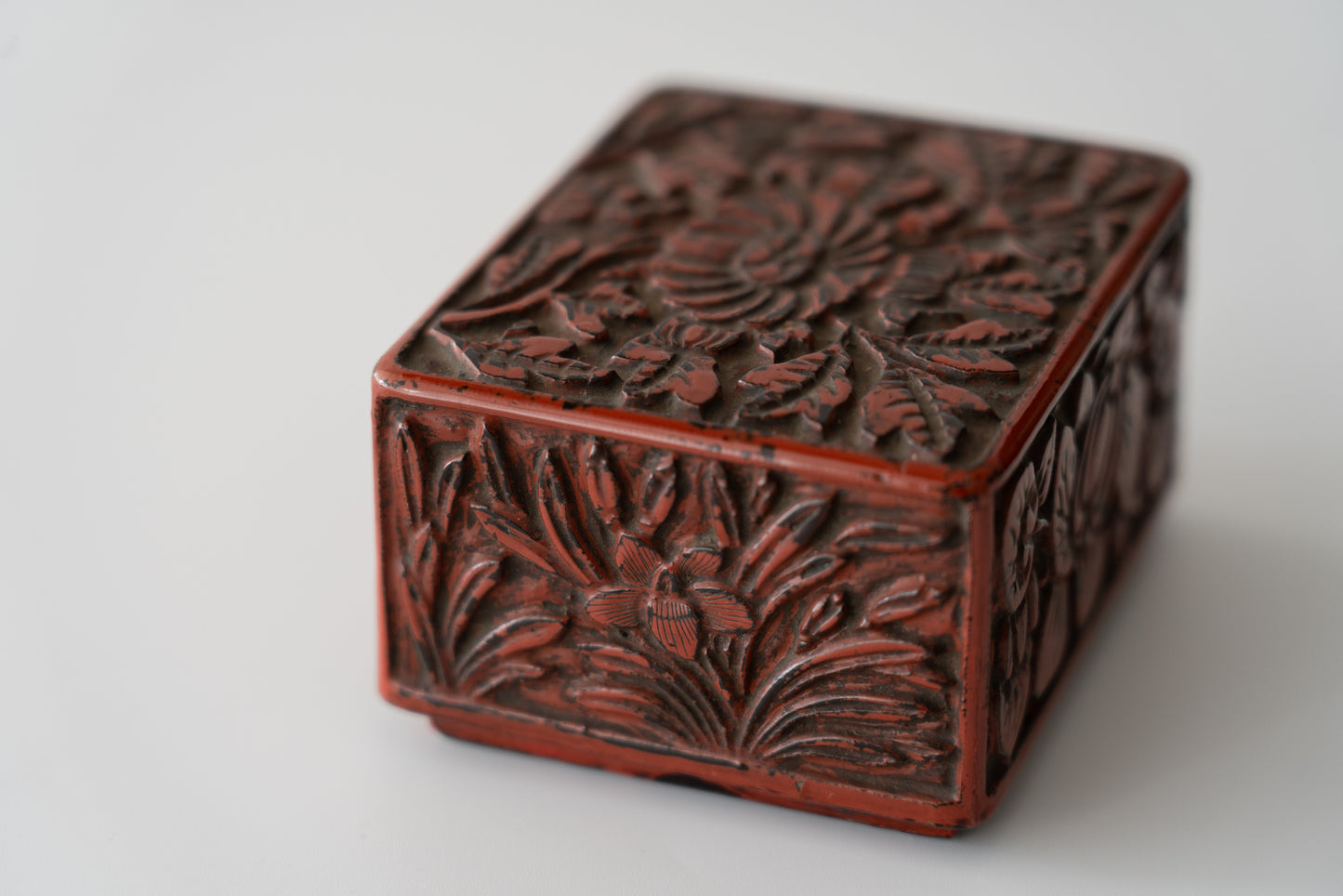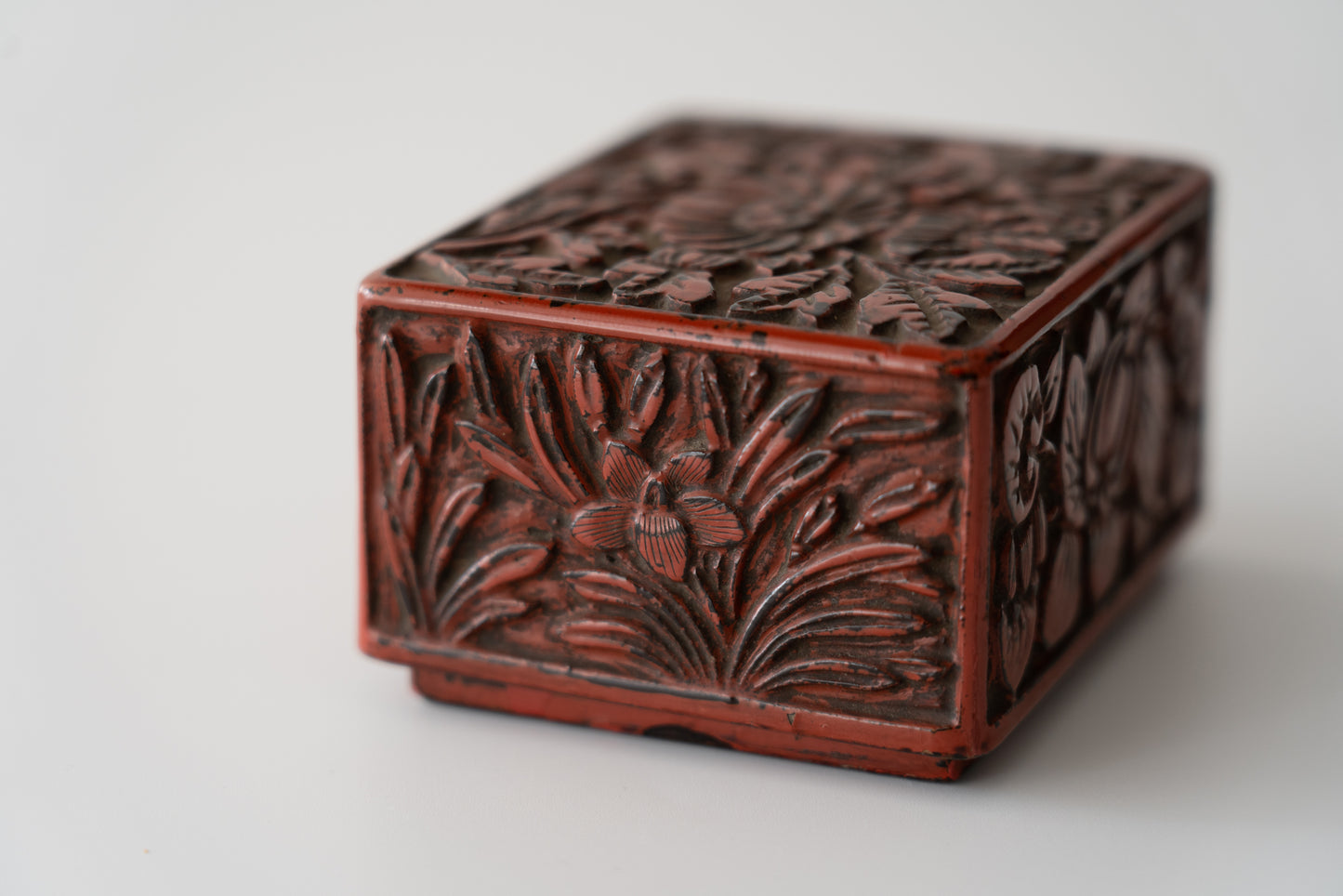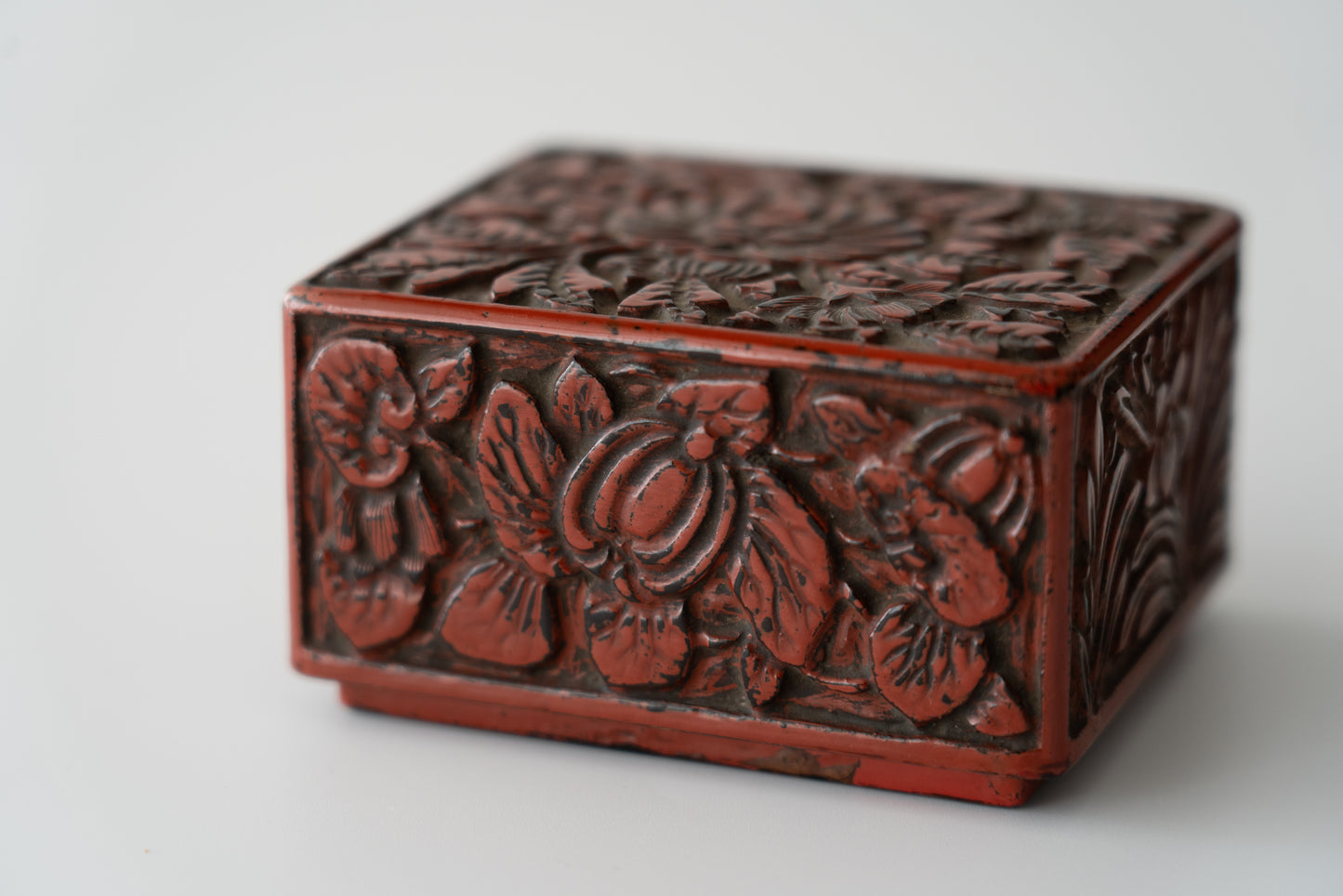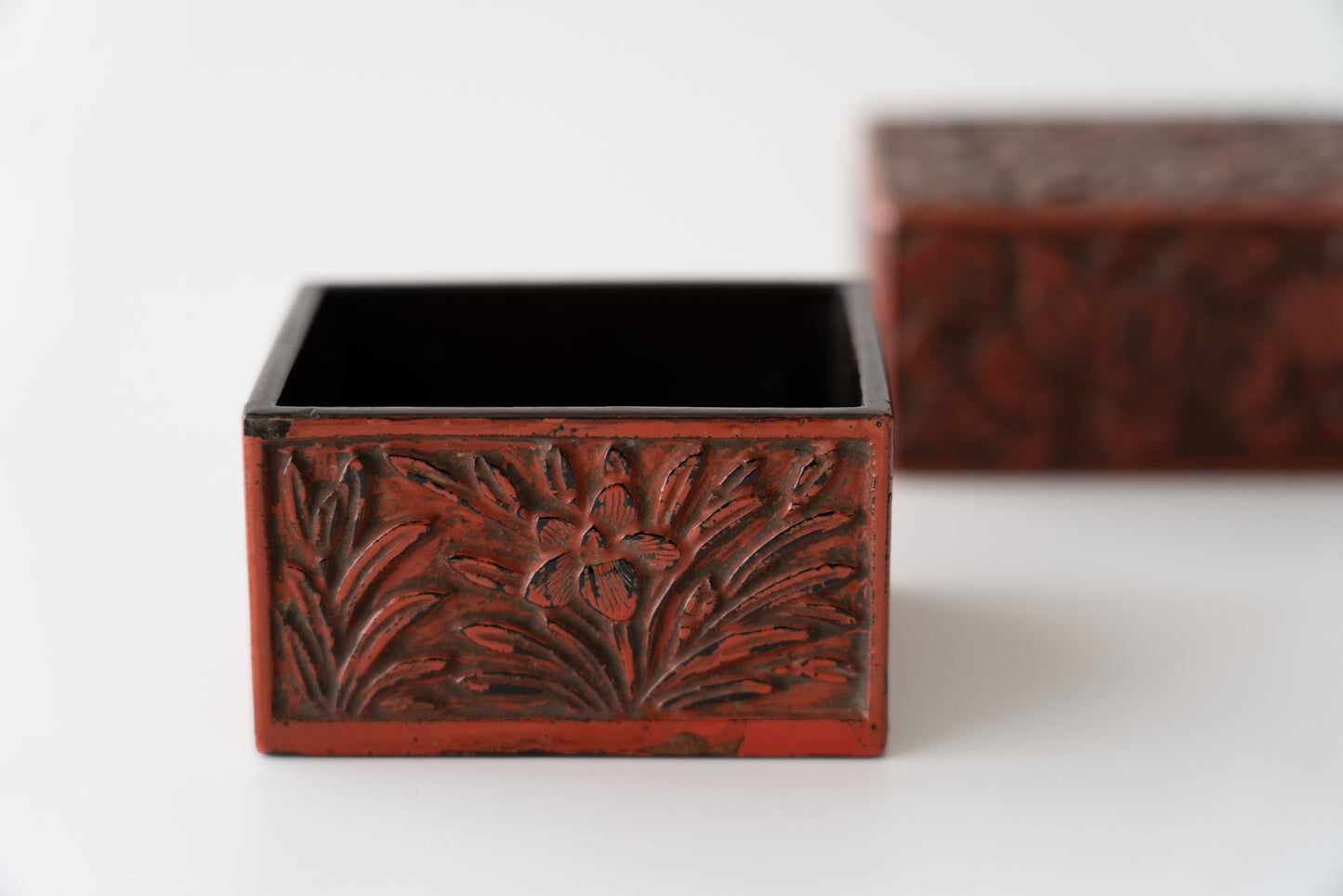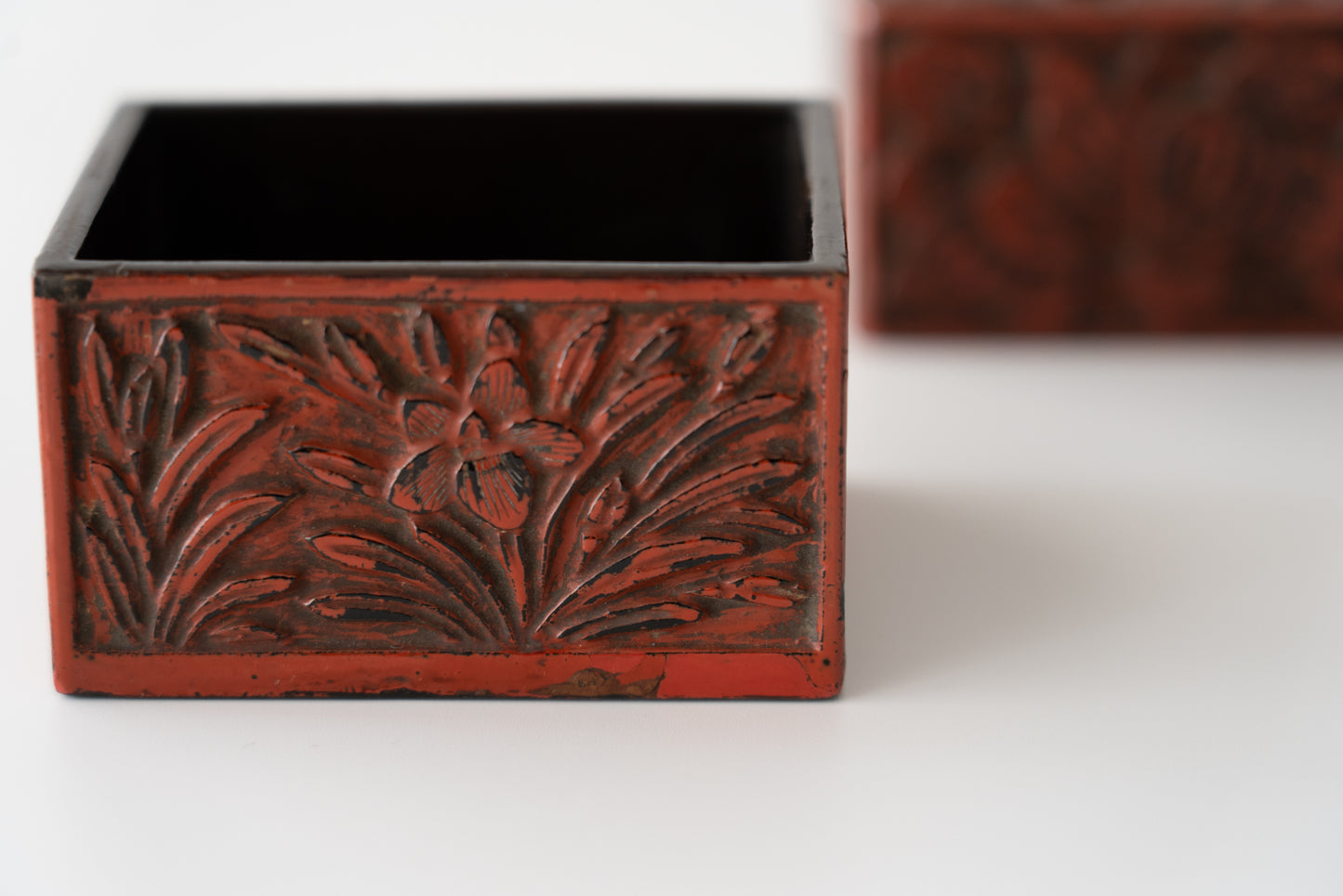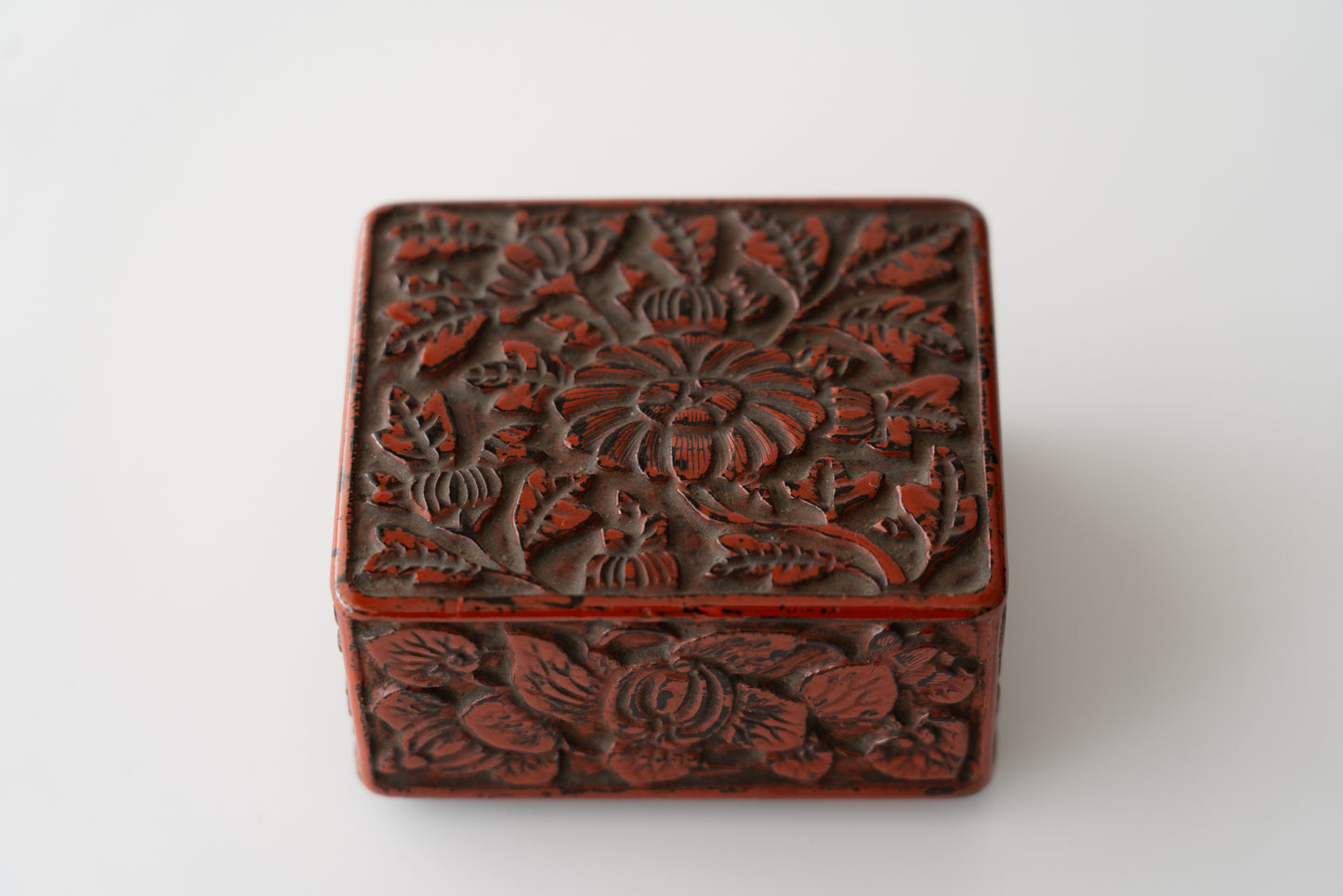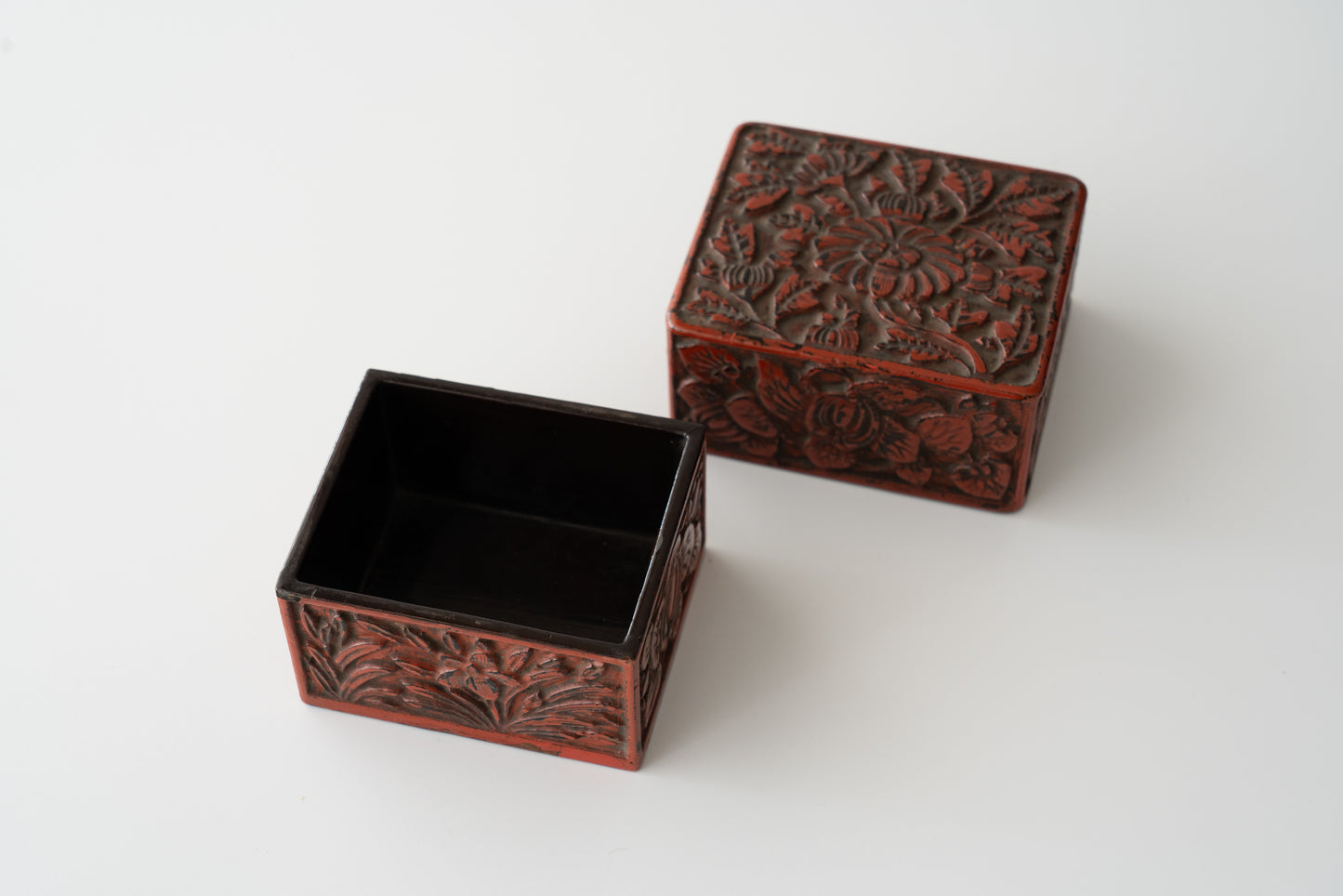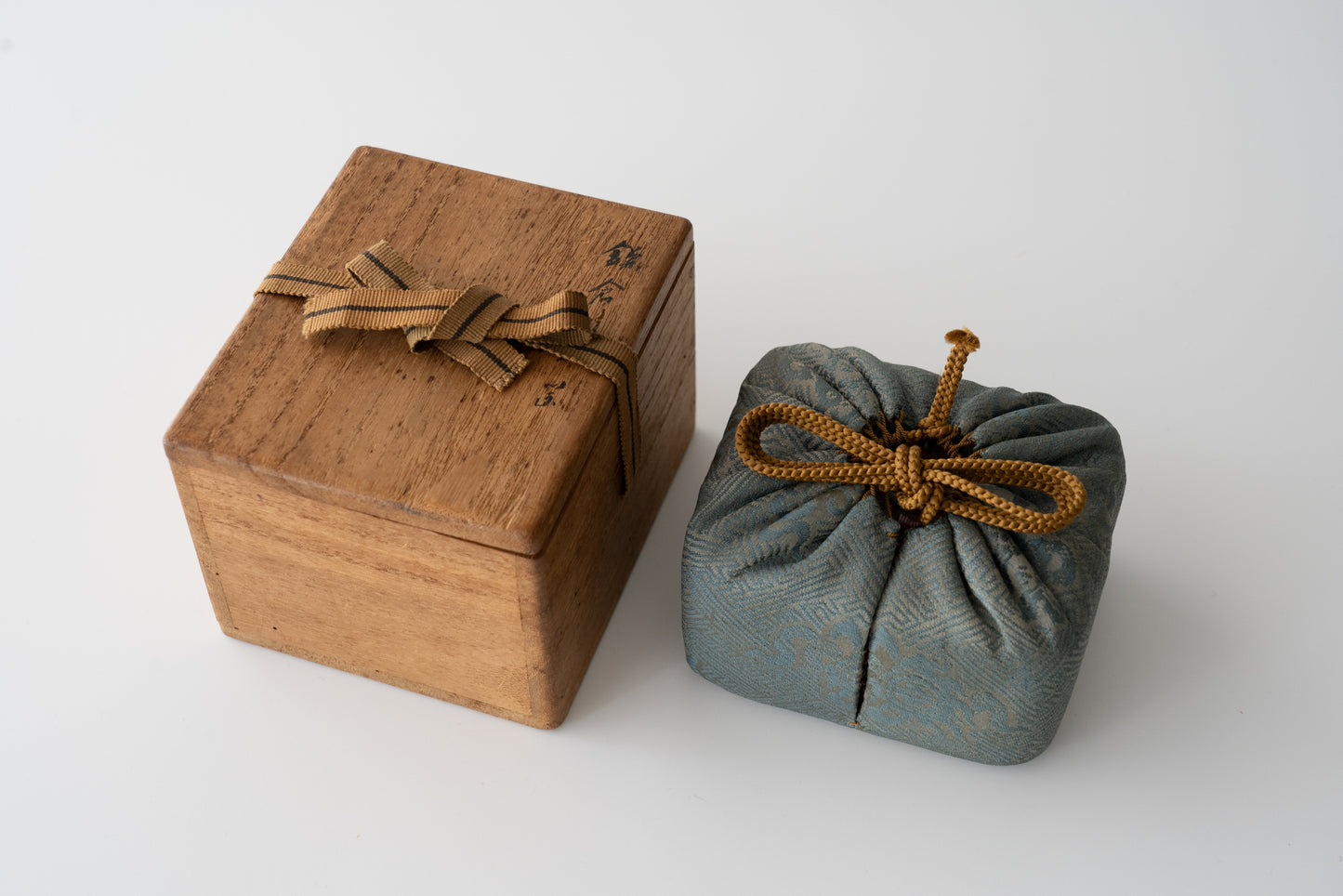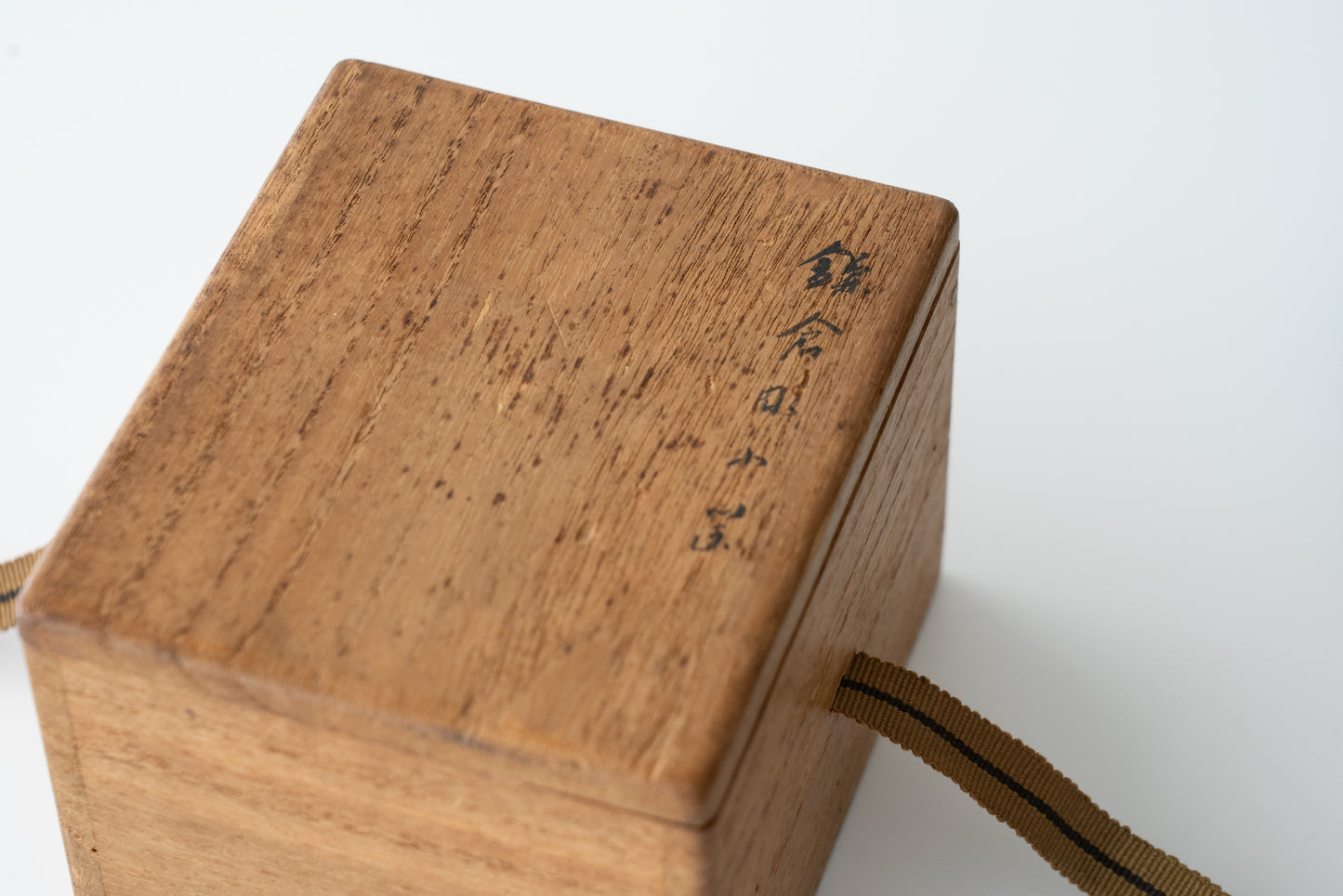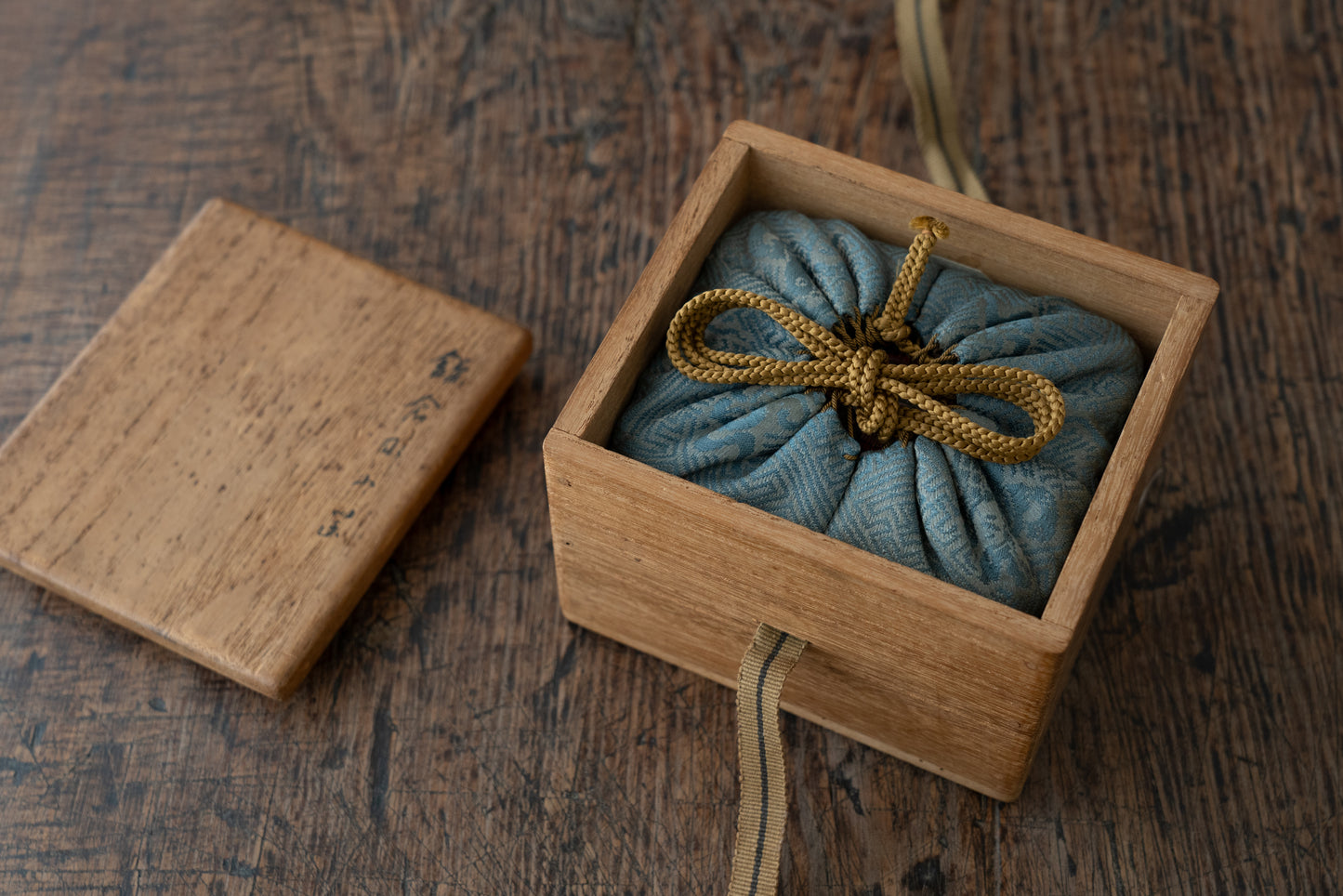Kamakura-bori incense box with Narcissus and Chrysanthemum design
- Region/Era Japan / Momoyama-Edo period
- Size H4.5×W9.8×D8.2cm
- Condition Two vermilion lacquer repairs on the corners
- Accessory Shifuku, wood box
- No. 42nk-44
This is a rare box-shaped piece of Kamakura carving.
The size of the box suggests that it may have been used as an incense box.

On the upper surface of the lid is a single large open chrysanthemum flower in the centre. Surrounding it are buds and five-minute flowers.
The sides of the lid and body are decorated with alternating clusters of daffodils and gourds with thick foliage.

The use of three different botanical designs without the peony design, which is by far the most common type of Kamakura carving, is very unique.
This is a gorgeous small box that successfully incorporates the natural scenery that can still be seen in each season into its design.

IInfluenced by Chinese Zen Buddhism culture, Kamakura carving began as a Buddhist master's copying of carved lacquerware from China.
From the rich Chinese style of the Muromachi period (1336-1573), the style gradually became popularised and was incorporated into the tea ceremony culture, leading to the production of not only Buddhist ritual utensils but also incense containers, tea utensils and trays.
The soft, Japanese flavour of this work is thought to reflect a somewhat different sensibility from that of the time when faithful copies of Chinese objects were made under the influence of Zen Buddhism.

The corners have been repaired with vermilion lacquer from age-related peeling, but there are no other cracks and it is in very good condition.
Comes with a shifuku pouch and a wood box.

To pick up and see the actual item in the gallery.
Reservation